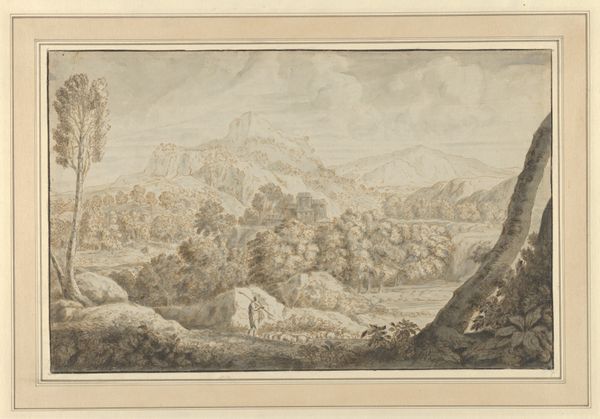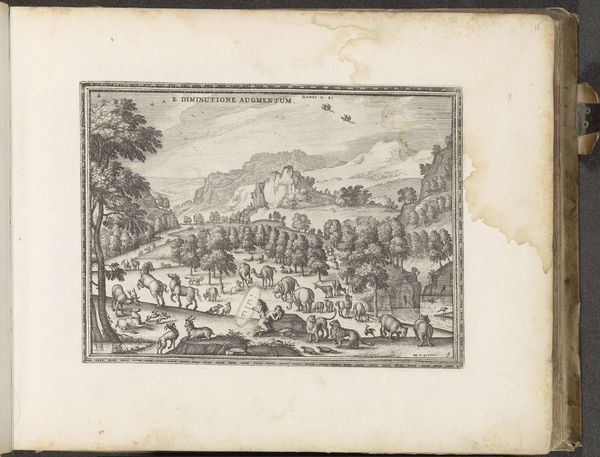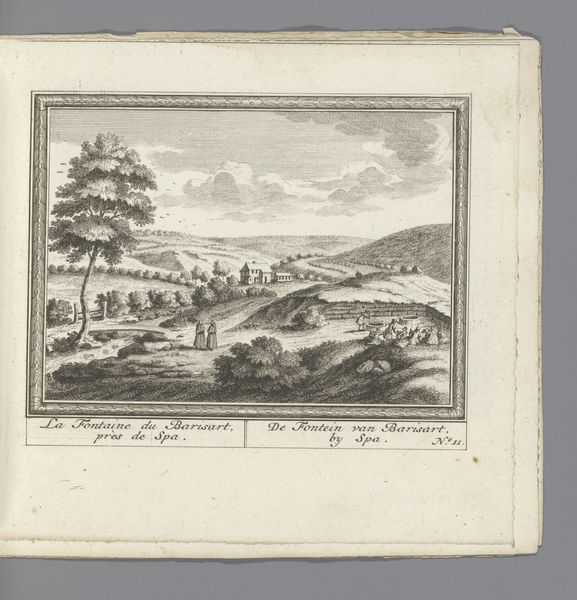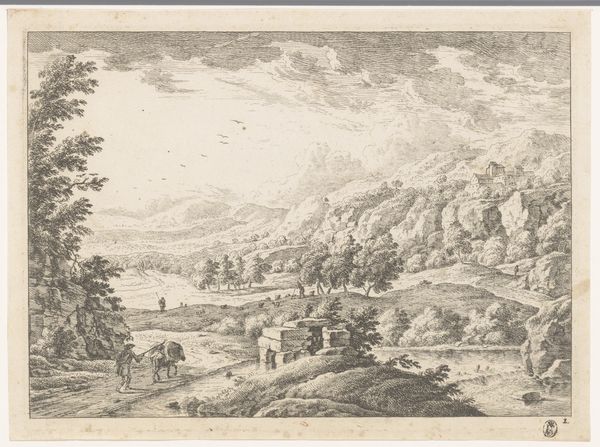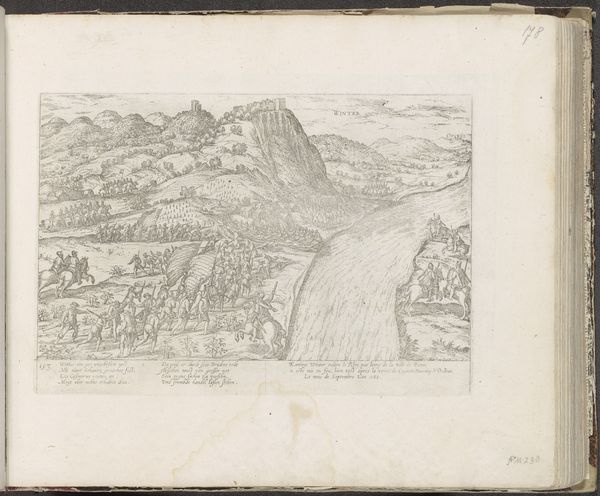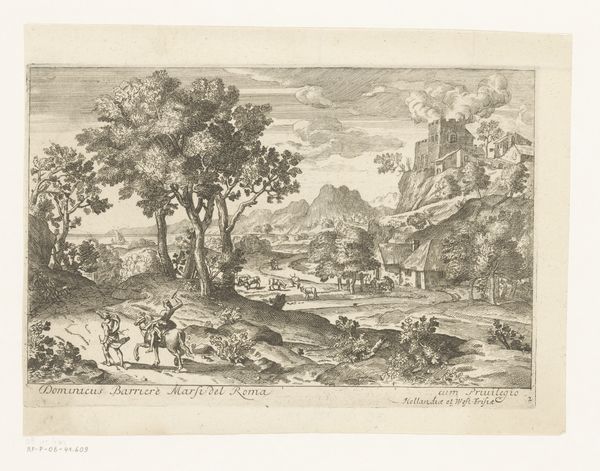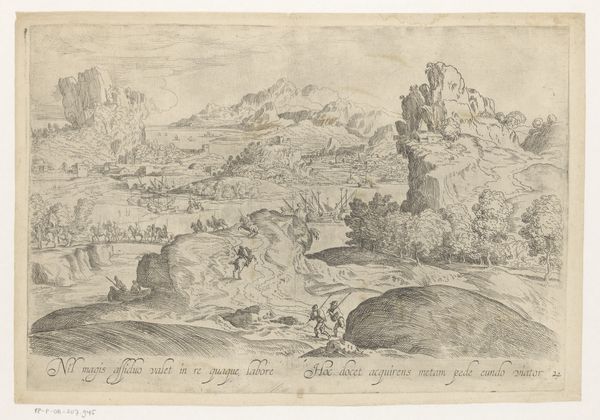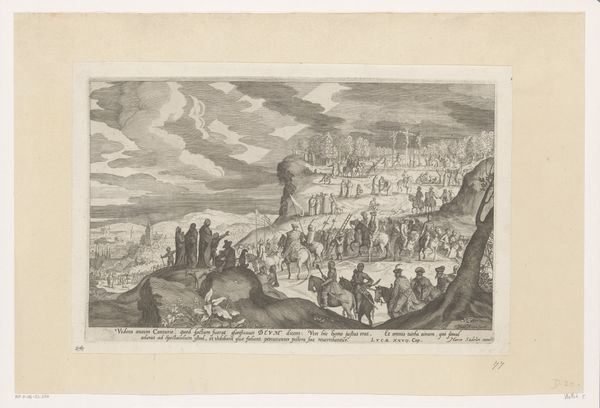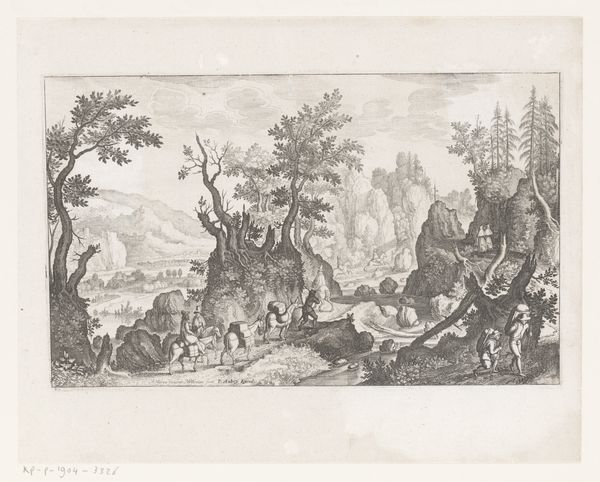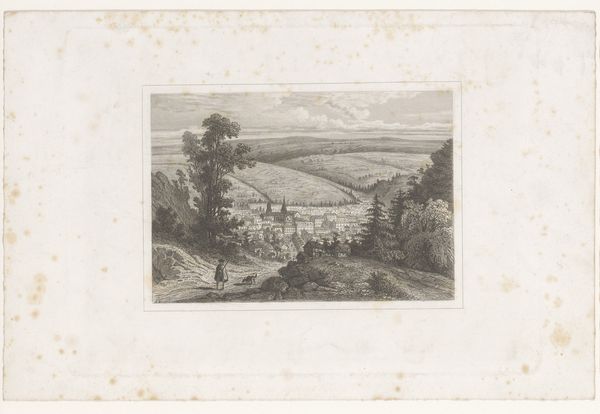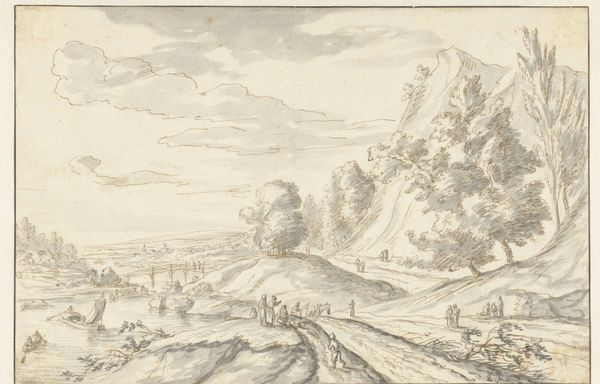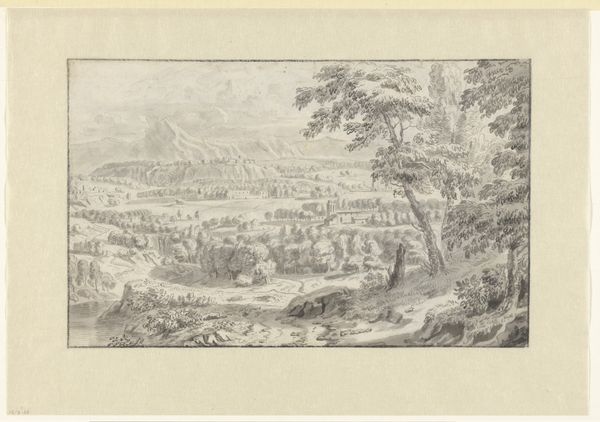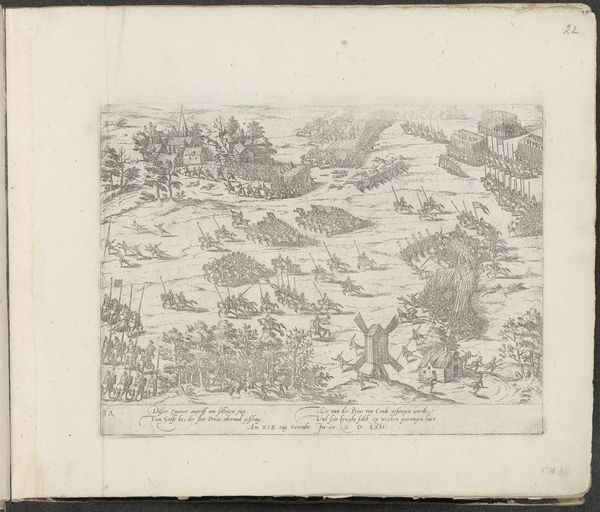
Blick auf einen See zwischen hohen Bergen und eine Stadt auf einer Landzunge, im Vordergrund ein Hirte mit Schafen
0:00
0:00
drawing, ink
#
drawing
#
landscape
#
ink
#
15_18th-century
#
watercolor
#
realism
Copyright: Public Domain
Curator: Here we have an interesting work from the Städel Museum's collection: a landscape drawing in ink and watercolor by Johann Rudolf Studer, titled "View of a Lake Between High Mountains and a Town on a Promontory, with a Shepherd and Sheep in the Foreground." Editor: Whoa, talk about a mouthful of a title! My first impression is a dreamy stillness. It’s monochrome, which really softens everything, almost like looking at a memory. And that sheep...I'm picturing curling up with them for a nap. Curator: The pastoral scene presented offers, as you suggest, a moment of serenity, but it also speaks to broader historical power dynamics. Landscape art in the 18th century was closely tied to notions of land ownership, national identity, and even the justification of colonialism through idealizing "untouched" nature. Editor: Hmm, interesting. I hadn't considered the politics behind it. But I see what you mean – this idyllic image hides a whole world of...well, who actually gets to *live* in this pretty place? It definitely feels like a removed gaze, like, are we sure Studer actually spent much time near sheep? Curator: Precisely. We can also interpret the lone shepherd as a symbol of social hierarchy and control, subtly reinforcing dominant ideologies. Editor: And the use of grayscale – I wonder if that was intentional, a comment on the lack of vibrancy, almost a premonition of how this beautiful space could become muted, homogenized under those systems you were mentioning? I'm getting ahead of myself. Curator: Not at all, it raises fascinating questions about artistic intent and interpretation. Studer's choices – the muted palette, the composition's focus on distance and control – resonate with discourses on landscape and power from that era, particularly as it reinforces the artist's perspective. Editor: Right. Like, it’s "my" view. Which, fair, but maybe leave space for a sheep's-eye view, you know? Thanks, I will never look at landscapes in the same way! Curator: And that is what truly good art should do: prompt us to reflect and see the world, and its images, in new light.
Comments
No comments
Be the first to comment and join the conversation on the ultimate creative platform.
